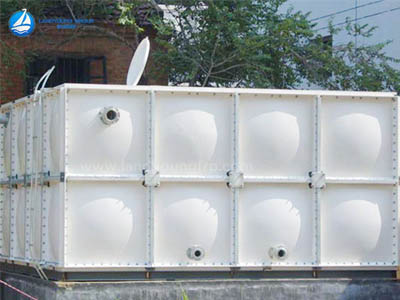sales@landyounggroup.com
+86 133 2318 2255
Water tanks are used to store water for many applications, including drinking water, irrigated agriculture, fire suppression, agricultural growing, plants and livestock, chemical manufacturing, food preparation and many other uses. Water tank parameters include the general design of the tank, the materials of construction, and the choice of lining. Various materials are used to make tanks: plastic (polyethene, polypropylene), fibreglass, concrete, stone, steel (welded or bolted, carbon or stainless steel). Water tanks are an effective way to help store clean water in developing countries.
Glass fibre reinforced plastic/ GRP tanks/containers are used for storing liquids underground. The chemical contact tank of the FDA and NSF polyethene structure allows the retention time for chemical treatment of the chemical "contact" (chemical treatment) with the product water.
Underground tanks made of carbon steel lined can receive water from wells or surface water, thus allowing large quantities of water to be put into stock and used during peak demand cycles.

An elevated tank, also known as a water tower, will create a ground outlet at a pressure of 1 kPa per 10.2 cm (4.0 in) or 1 lb per 2.31 ft (0.70 m) above sea level. Thus, a tank raised to 20 metres produces a pressure of approximately 200 kPa and a tank raised to 70 feet produces a discharge pressure of approximately 30 psi, sufficient for most domestic and industrial requirements.
Vertical cylindrical dome tanks can hold 200 litres or 50 gallons to several million gallons. Horizontal cylindrical tanks are often used for transportation because their low profile creates a low centre of gravity and helps to keep the transport vehicle, trailer or truck balanced.
Hydro-pneumatic storage tanks are usually horizontal pressurised tanks. Pressurising this reservoir allows the stored water to be transported without surges into the distribution system.
It's no surprise that many people want to know the price of water tanks. One thing we always keep in mind is to look for water storage tanks that are reasonably priced and meet the highest quality standards. When it comes to drinking water safety, all boxes need to be ticked. Likewise, consumer recommendations are important. Let's look at a number of factors that affect the price of a water tank.
1. Size: It is understood that a smaller tank size made from the same materials and by the same manufacturer will be cheaper than a larger tank of the same range. However, this does not mean that buying a 5,000-litre tank means that you will pay the equivalent of five 1,000 litre tanks. The ideal tank can be judged according to requirements. Therefore, size does affect the price of the tank.
2. Materials: The manufacturing process of the raw materials and the various layers of protection included in the manufacture of the tank will affect the price. Several layers of protection also increase the price of the tank.
3. Fittings and accessories: several tanks have accessories specifically tailored to the needs of the tank. Adjustments or additional fittings/accessories and piping can add to the price. The lids of the tanks are manufactured using rotomoulding technology, which makes them durable and adds extra protection to the tank, thus adding to the price of the tank.
If you want to get more information about the best GRP tanks, welcome to contact us today or request a quote.